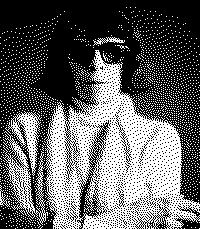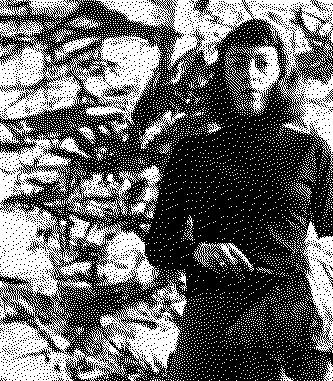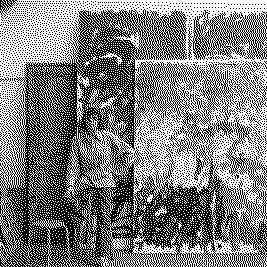Artists/Joan Mitchell
Fast Facts
Abstract Expressionsim
Mitchell is often associated with the Abstract Expressionist movement, particularly the New York School in the 1950s and 1960s. Her work is characterized by its dynamic brushwork and expressive use of color.
Influenced by Landscapes and Nature
Mitchell's paintings are known for their lyrical, sweeping forms that suggest landscapes, seascapes, or natural elements. Though abstract, her work often draws inspiration from her surroundings and personal experiences with nature.
Energetic Brushwork and Color
Her paintings are notable for their vigorous, gestural brushstrokes and the rich, layered use of color. Mitchell's ability to convey emotion and movement through color and form is a hallmark of her work.
Large-Scale Canvases
Mitchell frequently worked on a large scale, creating expansive canvases that immerse the viewer in their environment.
Poetry and Artistic Influences
She was influenced by poetry and had close ties with several poets of her time. This relationship with poetry is reflected in the rhythm, emotion, and abstract imagery of her paintings.
Biography



Joan Mitchell, born in Chicago in 1925, emerged as a pivotal figure in the post-war era, celebrated for her abstract expressionism.
Her journey in the arts began at the School of the Art Institute of Chicago, where her talent quickly flourished, leading her to France on a fellowship. This experience significantly influenced her style, pushing her paintings towards abstraction. By 1949, she had settled in New York, becoming an integral part of the New York School of painters and poets.
Mitchell's art, known for its vibrant, gestural brushstrokes, often drew inspiration from natural landscapes, embodying her personal memories and feelings rather than direct imitations of nature.
Her early years in New York were marked by significant artistic developments and social interactions within the Abstract Expressionist circle. Despite disliking labels, her association with this movement was undeniable. By the mid-1950s, her work had begun to gain recognition, leading to her participation in notable exhibitions such as the "Ninth Street Show." Her first solo exhibition followed in 1952. Mitchell's disdain for aesthetic labels didn't hinder her from engaging deeply with her contemporaries, including major figures like Willem de Kooning and Franz Kline, whose work she admired and with whom she shared a robust creative dialogue.
By 1959, Mitchell had made France her permanent home, where she continued to evolve artistically, participating in major exhibitions across Europe and the U.S. Her work during this period began to reflect a shift towards more somber hues and dense, central masses of color, expressing deep, primordial emotions. The landscape of Vétheuil, where she eventually settled, became a recurring motif in her paintings, mirroring her profound connection to her surroundings.
Mitchell's legacy extended beyond her canvases; her generosity and support for young artists and writers who visited her in Vétheuil had a lasting impact. After her death in 1992, the Joan Mitchell Foundation was established to continue her mission of supporting artists. The foundation also plays a crucial role in preserving and promoting her work, ensuring that Mitchell's contributions to abstract expressionism and her unique vision remain influential for future generations (Joan Mitchell Foundation) (Encyclopedia Britannica) (Wikipedia).
Importance
Joan Mitchell's significance in the art world is profound, spanning her creative force, critical success, and influential legacy that has shifted perceptions and valuations of her work over time. Here's a deeper look into her importance:
Revolutionary Abstract Expressionism
Mitchell stood out in the male-dominated New York Abstract Expressionist circles of the 1950s with her distinctive abstract paintings. Her works, characterized by energetic and colorful brushstrokes, were informed by landscapes, memories, poetry, and music, drawing on her personal experiences and emotional responses to nature (The Art Story) (SFMOMA).
Barrier-Breaking Creative Practice
Mitchell's oeuvre, which includes imposing physical canvases, darkly intense works from the early 1960s reflecting personal tribulations, and vibrant landscapes influenced by her life in France, breaks barriers in abstract expressionism. Her creative practice, encapsulating a rich array of colors and themes, from the evocative "Hemlock" to the tumultuous "Noël" and panoramic "La Seine" series, reflects her innovative approach to abstract painting (The Art Story).
Market Recognition and Canonical Reappraisal
Despite early underrecognition, particularly compared to her male contemporaries, Mitchell’s market presence has grown significantly. This change reflects a broader reassessment of her role as a post-war icon and a shift towards more inclusive art historical narratives. Notably, her work did not break the $1 million mark until 2004, but since then, her auction prices have seen a steady increase, with her paintings now commanding seven-figure sums (Artsy).
Institutional Acclaim
Mitchell's critical acclaim was matched by institutional recognition, as evidenced by retrospectives and exhibitions at major museums. A comprehensive retrospective at SFMOMA, co-organized with the Baltimore Museum of Art, highlighted her mastery of color and the depth of her creative practice. This and other exhibitions have helped to cement her status as a significant figure in American art (SFMOMA).
Technique
Joan Mitchell's painting technique is a fascinating amalgamation of bold gestures, deep emotional engagement, and a profound connection to nature, reflecting her unique position within the abstract expressionist movement. Her approach to painting evolved over the years, marked by several key characteristics that defined her as a pioneering artist:
Gestrual Brushwork and Physicality
Mitchell's canvases are known for their voluminous, gestural strokes that create a sense of dynamic movement and emotional intensity. Her technique involves layering paint, often directly from the tube, onto large canvases, creating textured surfaces that range from thick impasto to fluid, luminous washes (The Art Story).
Emotional and Physical Engagement
Mitchell's work is deeply personal, reflecting her inner turmoils, joys, and her relationship with the landscape. Her paintings, such as "Noël" and "La Seine," showcase how personal experiences and emotions directly influence her choice of color, gesture, and composition. She engaged with her canvas physically, using not just brushes but also her hands to manipulate paint, embodying a direct transfer of emotion onto the canvas (The Art Story).
Influence of Poetry and Music
Mitchell’s close ties to poetry and music deeply influenced her painting process. She titled many of her works after poems or musical pieces, reflecting the lyrical and rhythmic qualities in her brushwork. This connection is evident in works like "Hemlock," inspired by Wallace Stevens’s poem, highlighting her ability to translate literary and musical experiences into visual form (Artsy).
Memory and Landscape
Despite living and working in various locations, Mitchell carried her landscapes with her, painting from memory rather than direct observation. This approach allowed her to transform her recollections of places and feelings into vibrant, abstract compositions. Her work "My Landscape II" exemplifies how remembered landscapes and the emotional resonances they hold become the foundation of her visual language (SFMOMA).
Evolution and Consistency
While Mitchell’s style and themes evolved, she remained consistent in her influences and motivations throughout her career. Her work continually reflects an engagement with nature, music, poetry, and her personal life, without undergoing drastic shifts in form or process. Even as she explored different themes or underwent personal challenges, her fundamental approach to painting—marked by intensity, devotion, and a deep connection to her experiences—remained steadfast (Artsy).





















